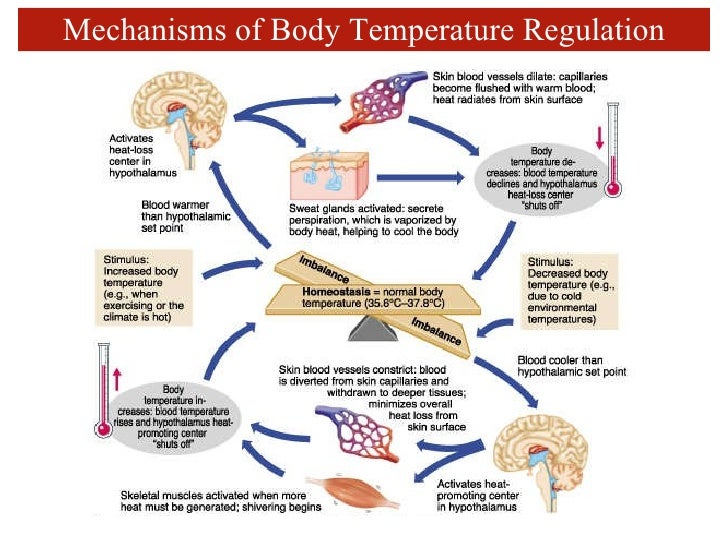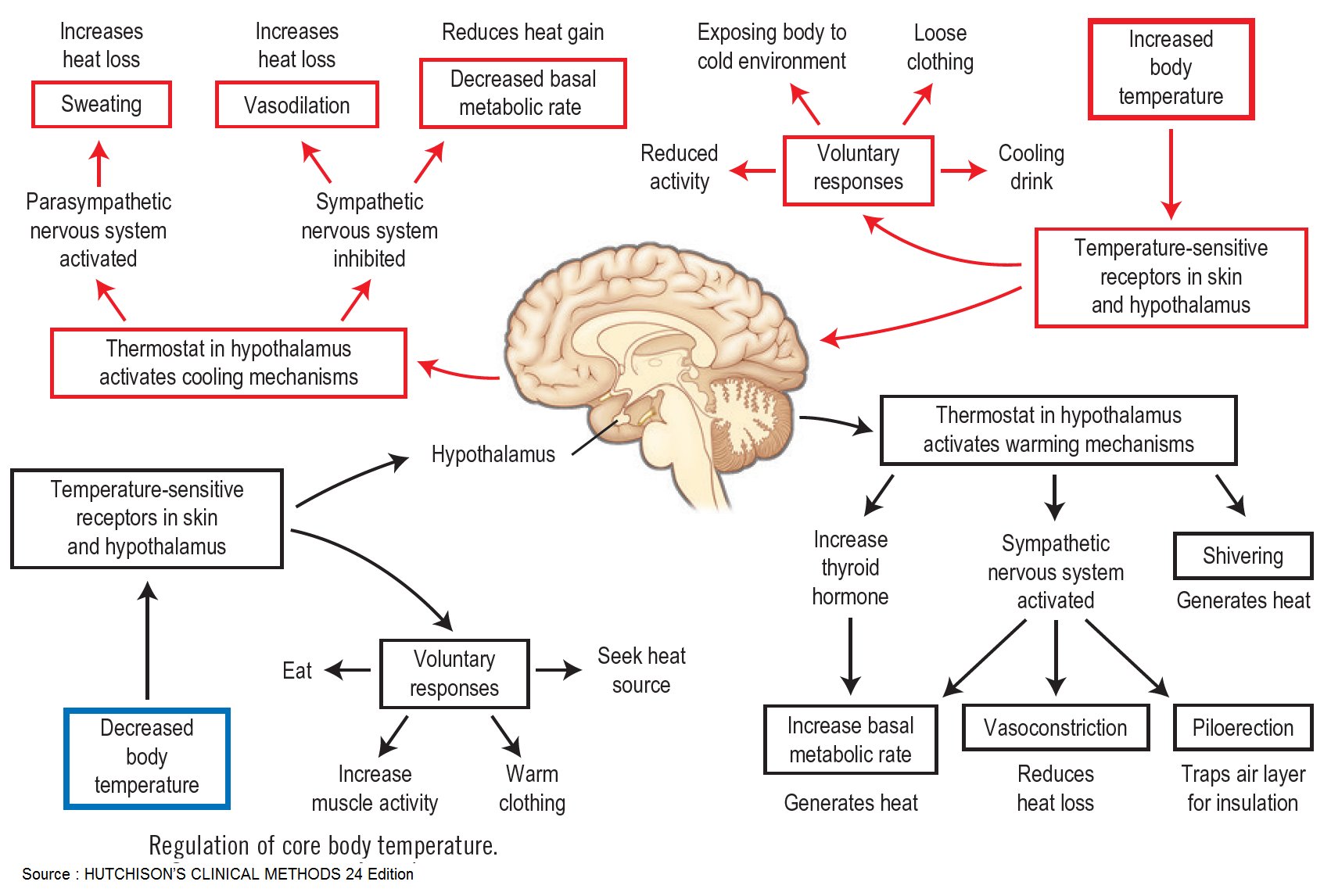Body Temperature Regulation After Surgery

Understanding the process of body temperature regulation is essential for comprehending its significance after surgery. This illustration provides a visual representation of how the body ensures that core temperature remains within a specific range. The body employs various mechanisms to counteract external temperature changes and preserve homeostasis. These mechanisms include perspiration, vasoconstriction, shivering, and more.
Subheading 2: Factors Affecting Body Temperature Regulation After Surgery Several factors can influence how efficiently your body regulates its temperature after surgery. Being aware of these factors can help you anticipate challenges and take necessary precautions for a smooth recovery. H2: Surgical Site Inflammation and Its ImpactInflammation at the surgical site can affect the body's ability to regulate temperature. The healing process triggers an immune response, leading to localized inflammation. This inflammatory response can contribute to a slight elevation in body temperature. It is crucial to monitor any abnormal temperature spikes and seek medical advice if necessary.
H2: Anesthesia and Its Influence on Body TemperatureAnesthesia plays a significant role in surgical procedures but can also impact body temperature regulation. Certain anesthesia medications can cause temporary changes in the body's thermoregulatory mechanisms during and after surgery. Your medical team will closely monitor your temperature and take steps to maintain an ideal range throughout the surgical process and recovery.
H2: Physical Activity and Core TemperatureEngaging in physical activity during the recovery period can affect your body temperature regulation. Moderate exercise can increase blood flow and raise core body temperature. However, excessive activity or intense workouts may lead to excessive thermogenesis, potentially overheating the body. It is crucial to follow your surgeon's guidelines regarding activity levels to avoid any complications.
Subheading 3: Tips for Supporting Body Temperature Regulation Taking proactive steps to support your body's temperature regulation during the recovery process can contribute to a smoother healing journey. Here are some essential tips: H2: Dress Appropriately for Optimal ComfortChoose clothing that allows for easy adjustment to temperature changes. Opt for layers that can be added or removed as needed. This enables you to adapt to varying environments and body temperature fluctuations without discomfort.
H2: Maintain Adequate HydrationStaying hydrated is crucial for temperature regulation and overall well-being. Drinking sufficient fluids helps your body maintain proper circulation and enables efficient cooling through sweat evaporation. Ensure you follow your healthcare provider's guidelines regarding fluid intake.
H2: Monitor and Record Body Temperature RegularlyKeep a record of your body temperature using a reliable thermometer. Discuss your temperature trends with your healthcare team during follow-up appointments. This monitoring helps detect any abnormal changes promptly, ensuring early intervention if needed.
FAQs: Frequently Asked Questions Q: Can changes in body temperature affect wound healing? A: Yes, maintaining an optimal body temperature is essential for promoting wound healing. Extreme temperature variations can stress the body and impair the healing process. It is crucial to monitor temperature and promptly address any significant deviations. Q: What should I do if I notice persistent abnormal temperature readings? A: If you observe persistent abnormal temperature readings, it is important to contact your healthcare provider. They can evaluate your situation and determine if any further investigation or intervention is necessary. Q: Are there any specific foods or drinks that can help regulate body temperature? A: While there are no specific foods or drinks known for directly regulating body temperature, a balanced diet that meets your nutritional needs supports overall health and helps the body function optimally, including temperature regulation. Conclusion: Understanding and supporting your body's temperature regulation after surgery is a vital aspect of your recovery journey. By being aware of the factors influencing temperature regulation, following essential tips, and promptly seeking medical advice when needed, you can optimize your healing process and ensure a smooth and successful recovery. Remember to consult with your healthcare provider for personalized guidance throughout your post-surgery recovery.Skin And Temperature
 Image Source : www.slideshare.net
Image Source : www.slideshare.net skin
Temperature | Designing For People
 Image Source : www.designingforpeople.org.uk
Image Source : www.designingforpeople.org.uk regulation
Manual Of Medicine On Twitter: "Regulation Of Core Body Temperature . #
 Image Source : twitter.com
Image Source : twitter.com body core temperature thermoregulation pathophysiology thermoregulatory regulation grepmed control
Regulation Of Body Temperature By Christopher Kirk - Infogram
 Image Source : infogram.com
Image Source : infogram.com temperature body regulation infogram
Homeostasis Examples And Meaning In Biology - Jotscroll
 Image Source : www.jotscroll.com
Image Source : www.jotscroll.com PPT - Regulation Of Body Temperature PowerPoint Presentation, Free
 Image Source : www.slideserve.com
Image Source : www.slideserve.com temperature regulation body
Regulation Of Body Temperature ~ Medicine Hack
 Image Source : www.medicinehack.com
Image Source : www.medicinehack.com homeostasis physiology hypothalamus thermostat
Biology Temperature Regulation - Shmoop Biology
 Image Source : www.shmoop.com
Image Source : www.shmoop.com temperature regulation body homeostasis thermoregulation heat biology endotherms endotherm animal cycle blood system ectoderm use
Regulation of body temperature by christopher kirk. Manual of medicine on twitter: "regulation of core body temperature . #. Temperature body regulation infogram. Body core temperature thermoregulation pathophysiology thermoregulatory regulation grepmed control. Skin and temperature